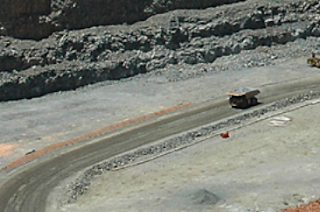Record gold prices fuelled by economic uncertainty and now political instability are driving production, development and exploration to new levels and the entire spectrum of the gold sector will be represented at the two day event.
It has been a remarkable 12 months since the last conference. When that event fnished on March 16, 2010 the gold price had closed the previous evening at $US1,105/oz. At the time the industry was heralding a great age and nothing that the gold price has done since then has dispelled that belief.
Gold reached a 2010 low of $US1,090/oz a few weeks after the conference but since then has broken all records put before it, reaching a new all-time high of $US1,444.40/oz on March 7. Gold equities have followed suit. The ASX’s largest gold company, Newcrest Mining Ltd wen from a May 2010 low of $30.38 share to a high of $43.41 in No vember. Australia’s other producers have followed suit, and there is plenty of them. The last 12 months have seen eight Australian miners pour gold for the frst time as the junio market takes advantage of the favourable price environmen and investor sentiment for precious metals.
While new faces have arrived on the list of Australian gold producers, thanks to a rash of M&A activity, others have disappeared. Newcrest’s $9.5 billion acquisition of the country’s second biggest gold miner, Lihir Gold Ltd, was just one of several multi-billion dollar gold deals put together last year.
In November, Kingsgate Consolidated NL announced a $376 million takeover of South Australian producer Dominion Mining Ltd and followed it up with the acquisition of South American focused explorer Laguna Resources Ltd. One of the rising stars of the Australian gold industry, Avoca Resources Ltd, also changed its guise after announcing a merger with TSX-listed Anatolia Minerals Development Ltd to create Alacer Gold Corp.
On the international front the majors continued to reap the benefts of escalating prices. The world’s biggest gold miner, Barrick Gold Corp, announced its December quarterly results on February 21, proving just how proftable the gold industry can be. Quarterly net income was a record $US896 million ($US0.90/share) adjusted net income rose 57% to $US947 million ($0.95/share) compared to $US604 million ($0.61/share) in the corresponding 2009 period. Full year production was 7.77 moz at lower total, and net cash costs of $US457/oz and $US341/oz, respectively.
But what does the future hold? A poll of 65 analysts conducted by Reuters in January found a median 2011 gold price forecast of $US1,450/oz an ounce, 18% higher than 2010’s average London Bullion Market Association (LBMA) gold fx of $US1,225.60/oz. The forecast is also just above last year’s record high of $1,430.95/oz and clearly out strips an average forecast of $US1,228/oz returned by a similar poll conducted last July.
Labels: Gold Market, GOLD Mining
 These wastes are sometimes of quite intrinsic value,as in the case of the sprues chipped from castings,or the little shavings produced by the engraver's tools,or the clippings that fall on the jeweler's bench.The neater the workman, the higher the value per ounce;that is,the less trash,the fewer match ends,bit of paper,cigarette ashes,etc....that have to be removed.
These wastes are sometimes of quite intrinsic value,as in the case of the sprues chipped from castings,or the little shavings produced by the engraver's tools,or the clippings that fall on the jeweler's bench.The neater the workman, the higher the value per ounce;that is,the less trash,the fewer match ends,bit of paper,cigarette ashes,etc....that have to be removed.


